AMD Teases Radeon RX 480: Launching June 29th For $199
by Ryan Smith on May 31, 2016 10:00 PM EST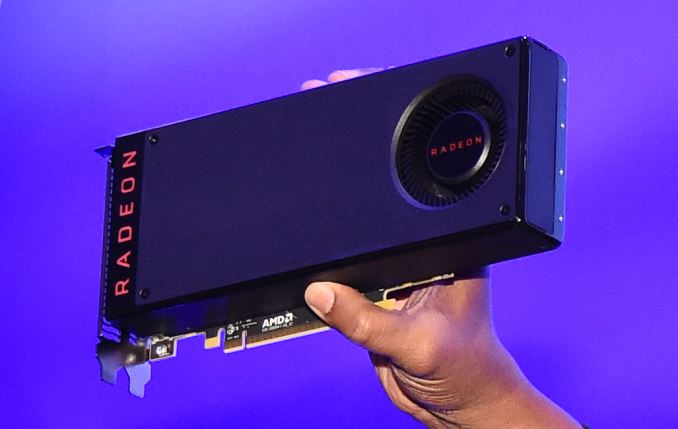
Kicking off at this moment is AMD’s Computex 2016 keynote. The company has multiple announcements scheduled this evening, but we’re going to jump right into an area that has been of extreme interest for many of our readers: GPUs.
Ahead of this evening’s event, AMD sent out an email to the press teasing the first of their discrete Polaris architecture based cards. Called the Radeon RX 480, AMD has unveiled much of the product’s specifications, but also its price and availability. When the card hits the streets on June 29th, it will be starting at the crucial mainstream battleground price point of $199.
| AMD Radeon GPU Specification Comparison | ||||||
| AMD Radeon RX 480 | AMD Radeon R9 390X | AMD Radeon R9 390 | AMD Radeon R9 380 | |||
| Stream Processors | 2304 (36 CUs) |
2816 (44 CUs) |
2560 (40 CUs) |
1792 (28 CUs) |
||
| Texture Units | (Many) | 176 | 160 | 112 | ||
| ROPs | (A Positive Integer) | 64 | 64 | 32 | ||
| TFLOPs (FMA) | >5 TFLOPs | 5.9 TFLOPs | 5.1 TFLOPs | 3.5 TFLOPs | ||
| Boost Clock | >1.08GHz | 1050MHz | 1000MHz | 970MHz | ||
| Memory Clock | 8Gbps GDDR5 | 5Gbps GDDR5 | 5Gbps GDDR5 | 5.5Gbps GDDR5 | ||
| Memory Bus Width | 256-bit | 512-bit | 512-bit | 256-bit | ||
| VRAM | 4GB/8GB | 8GB | 8GB | 2GB | ||
| Transistor Count | ? | 6.2B | 6.2B | 5.0B | ||
| Typical Board Power | 150W | 275W | 275W | 190W | ||
| Manufacturing Process | GloFo 14nm FinFET | TSMC 28nm | TSMC 28nm | TSMC 28nm | ||
| Architecture | GCN 4 | GCN 1.1 | GCN 1.1 | GCN 1.2 | ||
| GPU | Polaris 10? | Hawaii | Hawaii | Tonga | ||
| Launch Date | 06/29/16 | 06/18/15 | 06/18/15 | 06/18/15 | ||
| Launch Price | $199 | $429 | $329 | $199 | ||
First off, the RX 480 will include 36 CUs. If we assume 64 stream processors to a CU – the GCN standard – then this brings us to 2304 SPs. AMD has not named the specific Polaris GPU being used here, but given the CU count I believe it’s reasonable to assume that this is a Polaris 10 SKU, as I’ve already seen Polaris 11 and it’s a very small chip better suited for notebooks.
AMD also revealed that the card would offer over 5 TFLOPs of compute performance. Given what we know about the CU count, this allows us to estimate the GPU clockspeed. This puts the lower bound of the GPU clockspeed at 1.08GHz and an upper bound (6 TFLOPs) at 1.3GHz, which would be in the range of 10-30% higher clocked than comparable Radeon 300 series cards.
In terms of raw numbers this puts the RX 480 just shy of the current Radeon R9 390. However it also doesn’t take into account the fact that one of the major focuses for Polaris will be in improving architectural efficiency. I would certainly expect that even at the lower end of clockspeed estimates, RX 480 could pull ahead of the R9 390, in which case we’re looking at a part that would deliver performance between the R9 390 and R9 390X, with final clockspeeds and architectural efficiency settling just how close to R9 390X the new card gets.
On the memory front the card is equipped with 8Gbps GDDR5, running along a 256-bit memory bus. This is the typical bus width for AMD x80-series cards, and the high clocked 8Gbps GDDR5 means that we’re looking at a total of 256GB/sec of memory bandwidth to feed the RX 480’s GPU. AMD’s partners will be offering both 4GB and 8GB cards, and for the purposes of this teaser I assume that pricing information will be for the 4GB card, with 8GB serving as a premium option.
Finally, AMD has also revealed the TDP for the RX 480, stating that it will be a 150W card. As Polaris is built on 14nm FinFET, we’re seeing first-hand the benefits of finally making the long-awaited jump off of 28nm, as this means we’re looking at Radeon R9 390 series performance in a card that, on paper, consumes only a bit more than half the power. This also puts the RX 480 right in the sweet spot for mainstream cards, as 150W has traditionally struck a good balance between performance and power consumption that allows for a fast card that doesn’t require aggressive cooling, and is more compatible with OEM computer vendor case & cooling designs.
Cementing its place as a mainstream card, the RX 480 pricing will start at $199. This is an aggressive and heavily fought over price point that has traditionally defined the mainstream segment, attracting buyers who want great 1080p gaming performance that sub-$150 value cards can’t offer, without moving up to more expensive (and power hungry) $300+ cards. In this sense the RX 480 is a direct replacement for the R9 380, AMD’s Tonga-based card that hit the market roughly a year ago at the same price. Going by the raw numbers alone, RX 480 would be 40% (or more) faster than the R9 380.
Meanwhile I won’t speculate too much on the competitive market from a teaser, but it’s worth noting that this is nearly half the price of NVIDIA’s currently cheapest Pascal card, the GeForce GTX 1070. Interestingly both cards have the same 150W TDP, but looking at the throughput figures it does not look like RX 480 is meant to offer quite as high performance as NVIDIA’s card.
Moving on, along with teasing the RX 480’s specifications, AMD’s teaser also laid out their marketing plans for the card. We’re previously talked about how both Oculus and Valve/HTC were encouraging developers to treat VR like a fixed platform, and setting minimum hardware specifications to go along with that. On the AMD side those specifications called for a Radeon R9 290, which the RX 480 should be able to beat.
As a result AMD is planning on heavily promoting the VR aspects of the RX 480, as it brings the necessary performance down from a 250W, $300+ card to a 150W, $200 card. In fact AMD is claiming that VR performance will be closer to $500 video cards, in which case we’d be looking at performance closer to the Radeon R9 Nano, a Fiji based card.
With all of that said, the video card is just one component in the total price of a VR system – you still need the headset – but on the PC side it has also been the most expensive component. Consequently, AMD sees cheaper video cards that offer good VR performance as being important to bringing down the total price of a VR-ready system, and will be promoting the RX 480 as the prescription for entry-level VR needs. From a business perspective, AMD is ultimately expecting VR to be a fast-growing market, so the company wants to make sure they don’t miss out and have more VR-capable cards on the market as quickly as they can.
Along those lines, AMD’s release also makes note that at least one model will be “both HTC Vive Ready and Oculus Rift certified,” though no further details are being offered at this time. Whether this is just a certification matter or if there’s going to be something special about this model (e.g. connectors) is open to speculation.
Finally, now that they’ve revealed the price and much of the specifications of their first Polaris card, AMD is also releasing more details on their overall development and market positioning strategy with Polaris. As AMD has hinted at in the past, Polaris is being specifically developed for and aimed at the mainstream market. AMD wants to recapture lost market share – especially in laptops – and the large mainstream market is seen as the best way to do that. AMD is calling this their “water drop” strategy, and I expect we’ll hear a bit more about it tonight, including the meaning behind the name.
And with all of that said, it looks like we’re going to have a lot of AMD to talk about on June 29th. So until they, stay tuned.
Above: AMD SVP & Chief Architect Raja Koduri, Who Is Very Happy That Polaris Is About To Launch


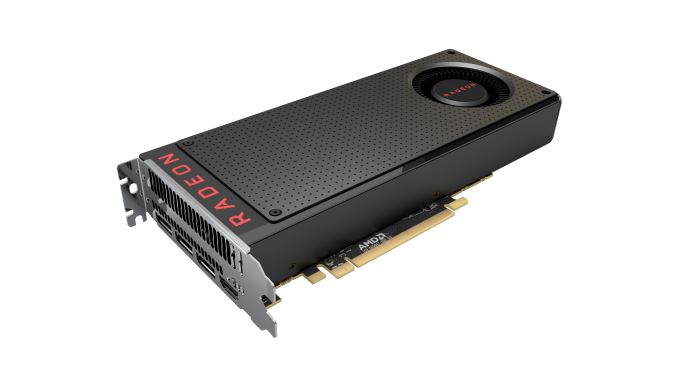

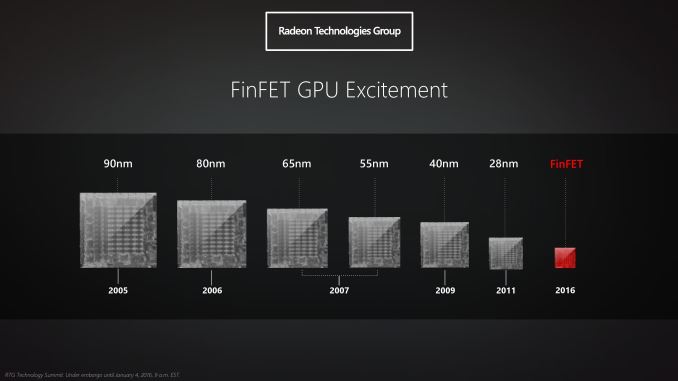
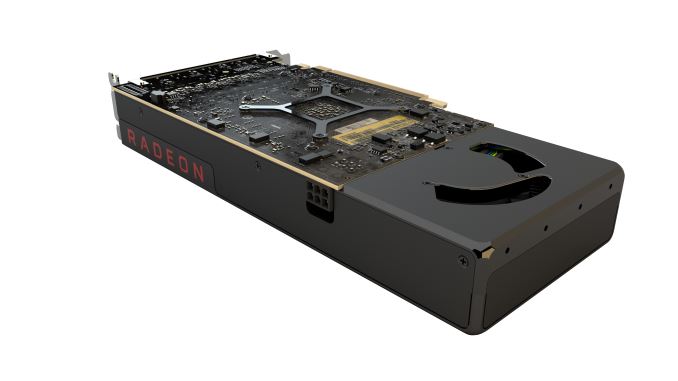




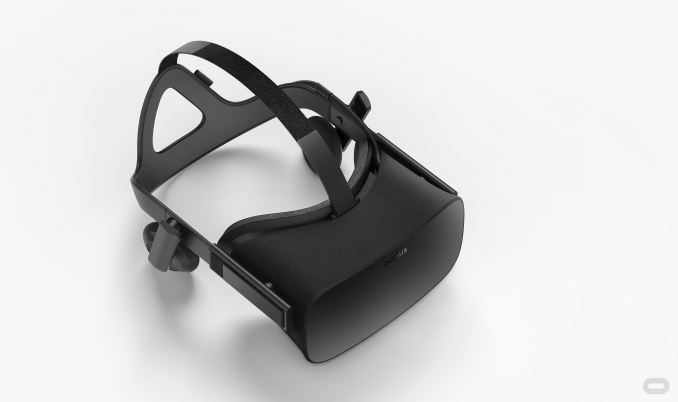









377 Comments
View All Comments
mapesdhs - Friday, June 3, 2016 - link
praxis22 writes:> The stuff you'll find in big box retail is always exploitative. They usually give
> you a good CPU, typically over specified for gaming which is GPU limited,
> and give you a passable GPU, that will likely need to be replaced within a year.
(good posts btw!)
This happens for pro sales aswell. I'm helping a guy who bought a system which was mostly to be for pro tasks, with some gaming too. It had a decent enough CPU (i7 4770) but a pretty naff GPU (GTX 645 1GB), and cost quite a lot. I'm building him a replacement with a 4.8GHz 3930K, Quadro 6000 6GB and GTX 580 3GB for extra CUDA.
Seems to be a common approach by generic builders, they overspec the CPU and then fit a lame GPU. The PC the guy bought also had a bizarre RAM config (12GB with 3 DIMMs). At least he had the sense to fit an SSD himself (I'm so tired of seeing OEM systems supplied with 1TB rust spinners).
jabber - Wednesday, June 1, 2016 - link
I was with you all the way till the Zen bit. It was like when you talk to someone and have a really good conversation then they say "and have you ever accepted the Lord Jesus into your heart?"praxis22 - Wednesday, June 1, 2016 - link
I run an i5 like most sensible gamers, I'm in now way an AMD fanboy, I bought my GPU for one game, so I'm defacto not normal. I just happen to think that the evident long running AMD strategy is very clever. I'm unlikely to buy a Zen/Xen (not sure how you spell it) but it will surely sell a lot if priced well.My wife would like me to accept Jesus, but my heart belongs to Danu :)
extide - Monday, June 6, 2016 - link
It's Zen. Xen is a hypervisor.JKay6969AT - Thursday, June 2, 2016 - link
Sadly with a lot of 'PC Enthusiasts' these days their brand loyalty is getting close to religious worship. Arguing against facts, logic and truth as they can't imagine a situation where their beloved brand could be wrong or worse or imperfect.The reality is that AMD, nVidia and intel are all corporations out to make profits, if the market allows them to price gouge then that is what they will do, if the market allows them to rebrand old products as new ones then that is what they will do, if the market forces them to compete then that is what they will do, if the market forces them to innovate and release new products then that is what they will do.
None of these companies hold any true loyalty to any of you, they just want you to invest in their products and advertise them through word of mouth, which incidentally is not a regulated form of advertising and so can be far more effective than having to tell the truth about your products, your fanboys will say whatever makes them feel they have won the argument regardless of it's basis in reality.
pashhtk27 - Friday, June 3, 2016 - link
Very true.When I built my pc 4 years ago, I was very proud not to have two components from the same brand except the RAM and PSU from corsair. And with a few updates, I still have no component and peripheral same except those two......and well, a gamepad and mouse from logitech.
I love my pc knowing that I investing in the best from all brands. Even though it's old and weak and....cheap in today's tech. :)
cocochanel - Wednesday, June 1, 2016 - link
I don't understand people bitching. AMD is bringing VR to the masses. What's wrong with that ? Nvidia and Intel can sit this one out if they want, who cares ? PlayStation Neo, Xbox One VR and Nintendo will probably have a powerful APU with Zen cores and Polaris GPUs. Me ? I'm waiting for PlayStation Neo + VR headset. All for about a grand. This stuff is as good as a 35k Tesla. Yummy !!!tamalero - Wednesday, June 1, 2016 - link
because each band expects to have the "bragging rights". Its always a back and forth. ATI won the crown? they blasted Nvidia, Nvidia won? the same in the opposite direction.eddman - Thursday, June 2, 2016 - link
"What this is, is a land grab. In 4x terms this is a Rush."There is nothing stopping nvidia from reducing 1070's price and positioning the upcoming 1060 (and 1060 Ti?) to counter 480, if they feel their market share is threatened.
"AMD will own, the laptop segment, with Polaris 11"
How would you know that? It depends on how GP106, 107 and 108 turn out.
"the Console segment, since Nvidia wasn't interested. Apple, and the consumer market. They also own the graphic subsystem with Mantle/Vulkan, So they get Android and iOS, etc. Since they have the consoles, and games port to the PC from consoles, it makes more sense to code to Vulkan."
Don't be so sure. There are two main gaming segments that do not really overlap: consoles/computers and mobile.
In the first segment PS, xbox and PC rule. PS comes with its own optimized APIs and xbox and PC use DX. It would take a lot to convince developers to abandon these powerful APIs.
"At a stroke AMD now owns PC gaming into the future. MSFT continues to screw up, since Direct X12 doesn't support dual cards."
No dual cards? What do you mean? DX12 supports multi-GPU setups.
"... skyrim ... dx9 ... 4gb ..."
What does this have to do with anything? Off-topic.
"What AMD are going for is market dominance, and market share"
Again, there is nothing stopping nvidia from countering all this.
praxis22 - Friday, June 3, 2016 - link
Oh good, argument! :)The Last time I bought a Laptop, 4/5 years ago, I bought a hybrid netbook with Nvidia's Optimus architecture. Woks well as a third party Chromebook, runs Linux well too, but the battery life sucks.
That's one thing I have noticed about big box retail, at least in Germany, that they no longer sell Chromebooks even as a paid installation like the rest, as it kills their margins. They're not the highest selling "laptop" on Amazon for nothing. That is the future of the consumer laptop, and thus the cheaper the chips the more margin the OEM makes. They do sell them in the UK however, that and very expensive laptops. There is seemingly no middle ground anymore. That is what I mean by owning the laptop market. Owning the rump of what's left of it. Globally there are only three makers of laptops with Clevo being the biggest. Everything else is just badged.
Sure there are plenty of indy games, which rely more on Steam for their target platform. With Vulkan I was talking about the big AAA titles, which for at least the past 5 years have been console first. they then port the console build to the PC. Skyrim, Witcher3, go look at the howls of the faithful about the graphics downgrade of Witcher3 because they chose to prioritise the console. The New consoles, (except Nintendo) will be running AMD. Purely because Nvidia wasn't interested, and Intel is incapable. Nintentdo has gone for a Tegra chip by Nvidia, so it can port to Android. Again using Vulkan. there were talks about optimising for Vulkan at the the recent Google IO, I watched them.
There is a shift underway, DX12 is built on Vulkan too, go check. This is shift back to a layer much closer to the metal, for better performance and memory management, essential for VR. This is a step change. It will take years, but it's already underway. Keep your hands inside the moving car, and watch out for changes :)
Have you used dual cards with DX12? I haven't, but I have read and watched a fair bit about people who have, and have thus taken to the interwebs to bitch about it. MSFT says they'll fix it. I haven't seen any comment about patching DX9 to use more VRAM. Though I have also seen a read a lot about that too. It's why I blocked the Windows10 upgrade. There aren't that many DX12 games as yet, so it will take years to fully phase out the older platforms.
What does it have to do with anything? It has everything to do with graphics cards, and the drivers and games that run on them. Not everyone has your use case, or habits. :)
You're right, there is nothing stopping Nvidia, except a desire. They're already looking to get out of the low end GPU business, and into AI and automotive, as anyone who's watched a recent Nvidia keynote, (like me) will have seen.